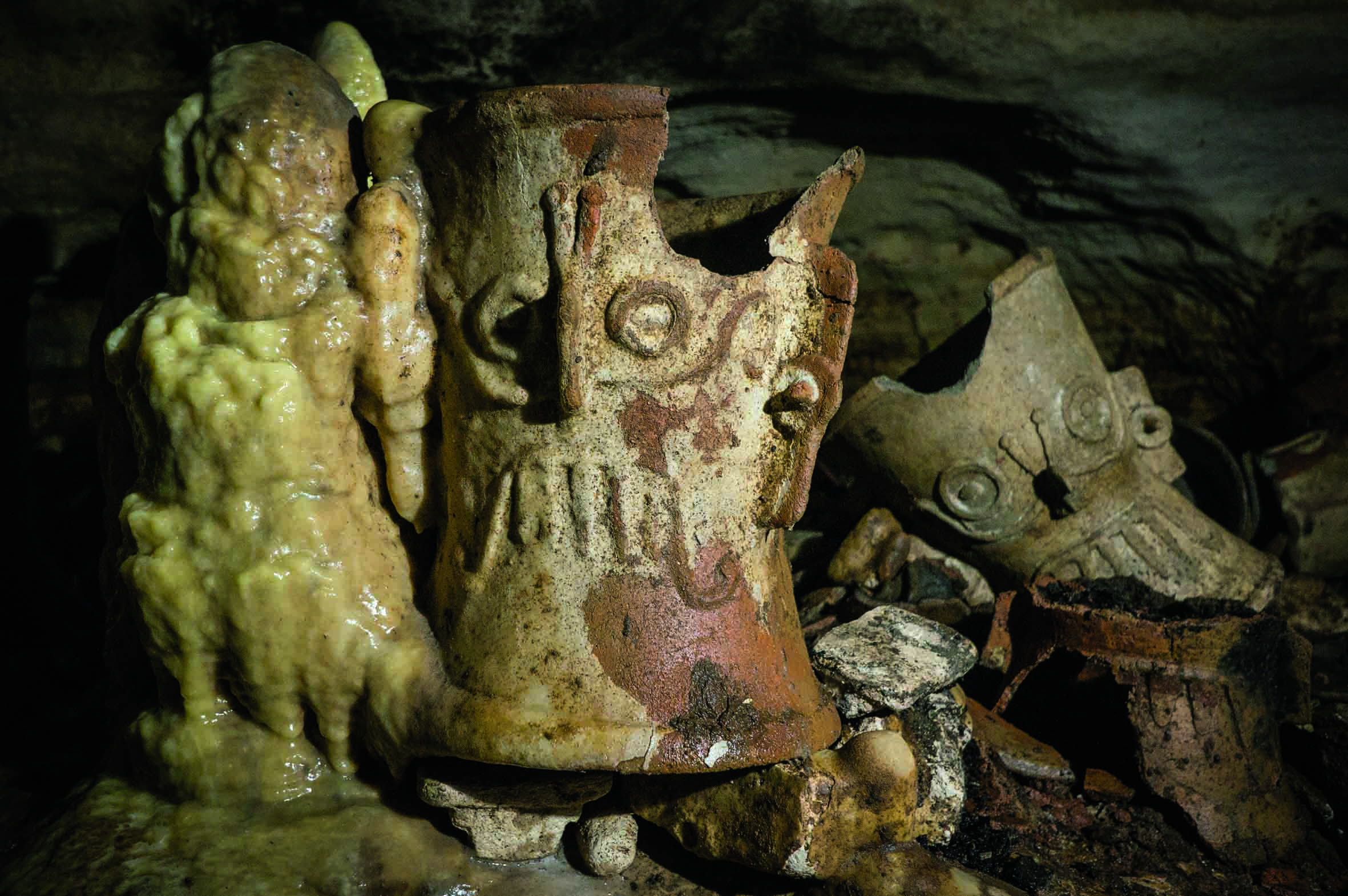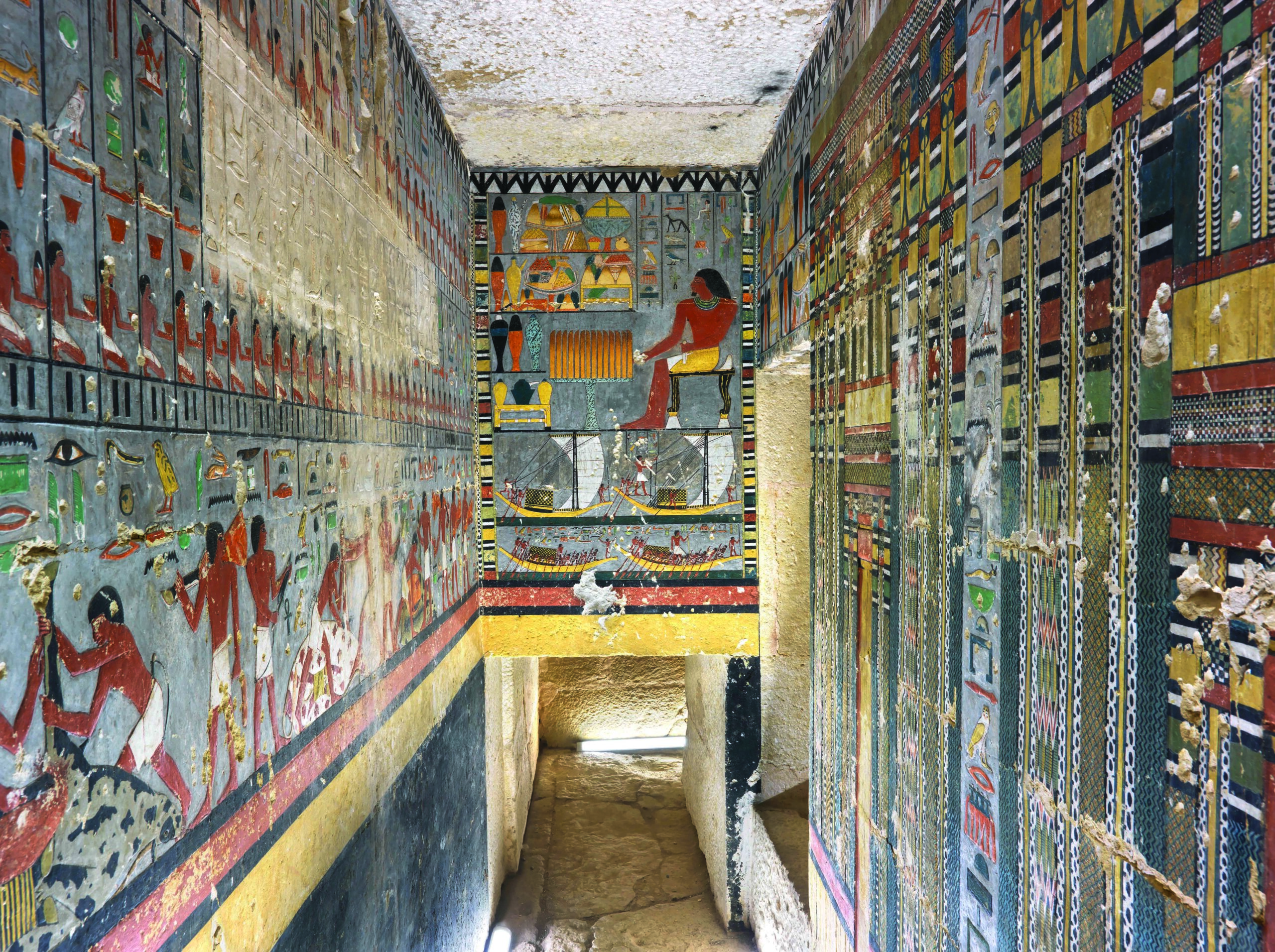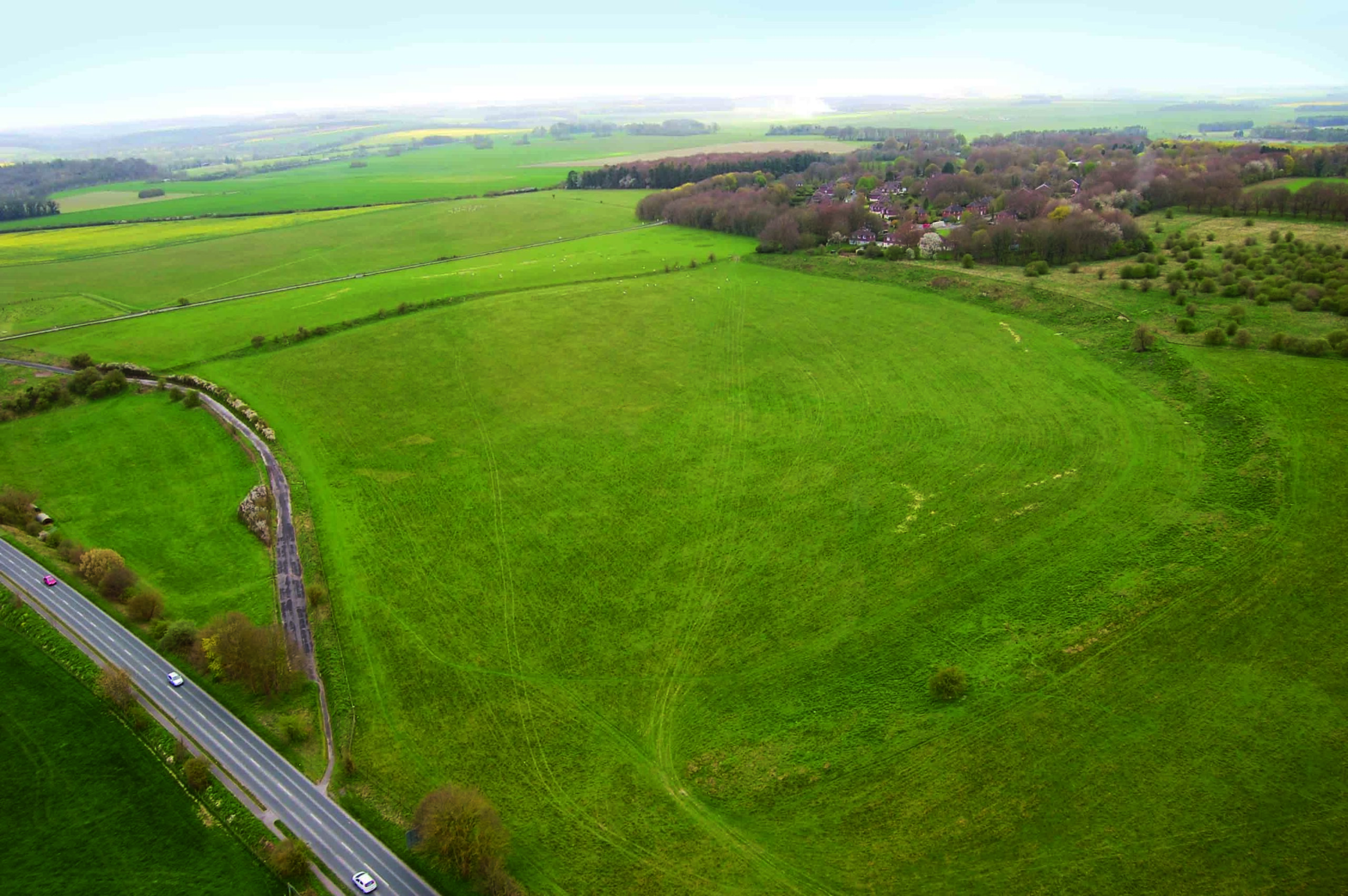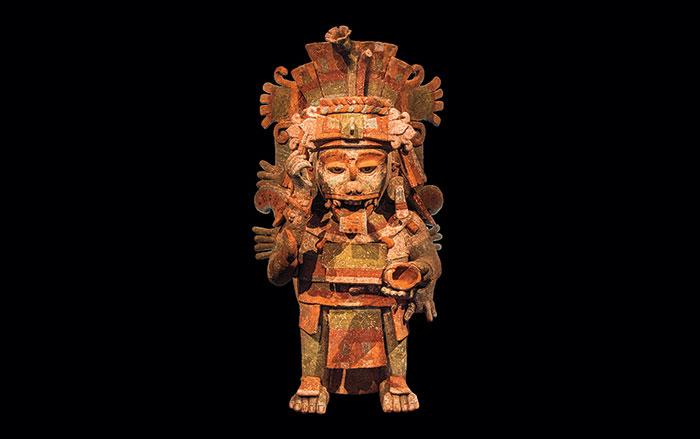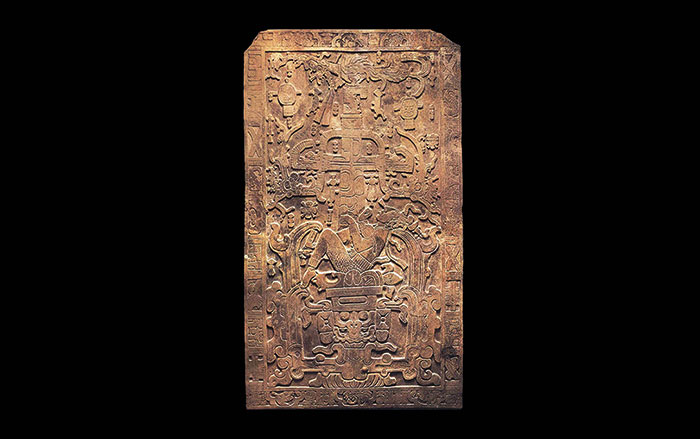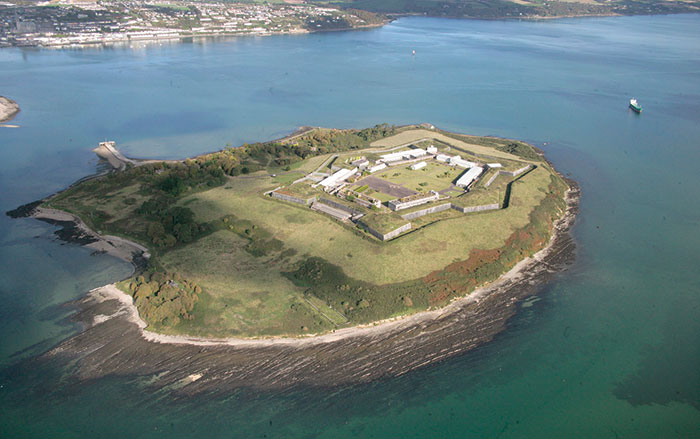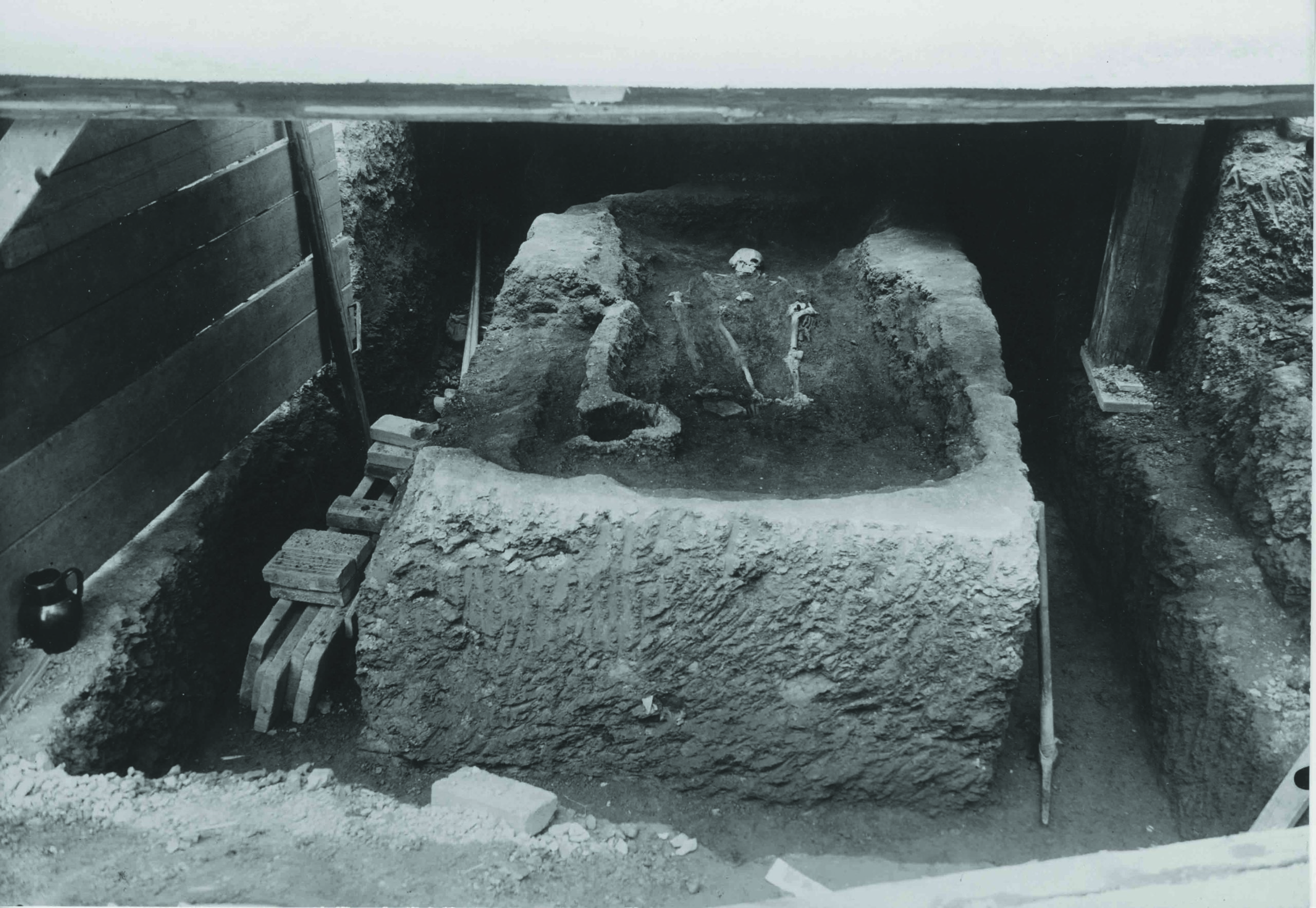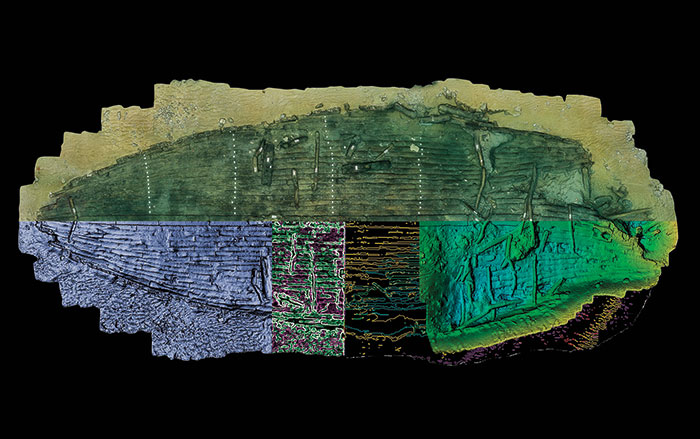Archaeologists exploring a cave system near the center of the Maya city of Chichen Itza unexpectedly came upon several chambers filled with ritual objects. This discovery supports the theory that when the great city was founded, sometime before the seventh century A.D., it was laid out with a relationship to the sacred underground realm in mind. Dubbed Balamku, or “Cave of the Jaguar God,” the cave system was first recorded by an archaeologist in 1966 and then sealed off from the outside world.
The current team, led by archaeologists Guillermo de Anda of Mexico’s National Institute of Anthropology and History and James Brady of California State University, Los Angeles, reopened the long-overlooked cave during a survey of underground rivers. After crawling through its cramped passages, they identified at least seven ritual chambers holding some 170 ceramic artifacts in all, including incense burners decorated with depictions of the rain god Tlaloc. “Balamku helps show that the subterranean world was important to the ancient Maya in ways archaeologists still don’t fully appreciate,” says Brady. The team also found evidence that the cave was desecrated in antiquity, likely by the same people who attacked Chichen Itza around A.D. 1200, precipitating its collapse. Further study of the cave may provide a more precise date for the city’s fall.
